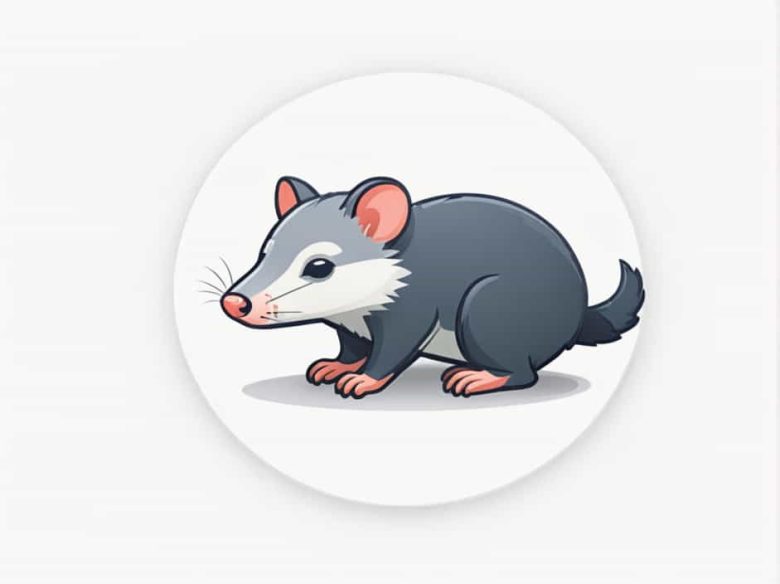Opossums are fascinating creatures known for their unique defense mechanism—playing dead. This behavior scientifically called thanatosis helps them survive attacks from predators by making them appear lifeless and unappetizing. But how does this instinct work and why is it so effective?
In this topic we will explore why opossums play dead how their bodies react during this state and the benefits of this survival tactic in the wild.
What Are Opossums?
Opossums are marsupials belonging to the order Didelphimorphia. They are primarily found in North and South America with the Virginia opossum (Didelphis virginiana) being the most common species in the United States.
Key Features of Opossums:
- Nocturnal creatures that are active at night.
- Omnivores eating fruits insects small animals and even carrion.
- Have prehensile tails which help them climb trees.
- Resistant to snake venom allowing them to eat venomous snakes.
However their most famous trait is their ability to “play dead” when threatened.
Why Do Opossums Play Dead?
Playing dead is an involuntary response not a conscious decision. When faced with extreme fear or danger an opossum’s body automatically enters a catatonic state.
How This Helps Opossums Survive:
- Predators Lose Interest – Many predators like foxes and coyotes prefer fresh kills. A seemingly dead opossum is often ignored.
- Avoids Direct Confrontation – Since opossums are not aggressive fighters this strategy helps them survive without engaging in combat.
- Tricks Predators Into Thinking They Are Rotting – The opossum’s body releases a foul odor making it smell like a decaying animal.
This tactic works against a wide range of predators including birds of prey wild dogs and even humans.
How Does an Opossum Play Dead?
The process of playing dead is a biological reaction triggered by extreme stress. Here’s what happens when an opossum enters thanatosis:
1. The Body Becomes Limp
The opossum collapses to the ground appearing lifeless. Its body goes into a state of paralysis and it cannot move.
2. The Eyes Remain Open or Half-Closed
Unlike sleeping animals the opossum’s eyes often remain slightly open adding to the illusion that it is truly dead.
3. Breathing Slows Down
The opossum’s breathing rate decreases making it harder for predators to detect any movement.
4. It Releases a Foul Smell
One of the most effective parts of this strategy is the nasty odor the opossum produces. It secretes a greenish fluid from its anal glands which mimics the scent of a decomposing body.
5. The Tongue May Stick Out
For extra effect some opossums let their tongue hang out making them look even more convincingly dead.
This state can last anywhere from a few minutes to several hours depending on the level of threat. Once the predator leaves the opossum slowly regains consciousness and continues with its normal activities.
Is Playing Dead a Learned Behavior?
No playing dead is an instinctive reaction rather than a learned skill. Unlike some animals that mimic behaviors they see in others opossums are born with this ability. It is a survival mechanism that has evolved over time allowing them to escape dangerous situations.
Which Predators Are Fooled by This Tactic?
Opossums have many natural enemies including:
✅ Coyotes
✅ Foxes
✅ Bobcats
✅ Owls and hawks
✅ Dogs and cats
Many of these predators hunt by detecting movement or signs of life. When an opossum suddenly drops motionless the predator may lose interest and move on.
However some animals such as bears or large predatory birds are not easily fooled by this act and may still attack.
Do Other Animals Play Dead?
Yes! While opossums are the most famous for this behavior other animals also use thanatosis as a defense strategy. These include:
- Hognose snakes – Flip onto their backs and emit a rotten smell.
- Certain frogs – Stiffen their bodies to appear lifeless.
- Some species of insects – Enter a motionless state when threatened.
This suggests that playing dead is an effective survival mechanism found in various species.
The Role of Thanatosis in Evolution
Playing dead is an example of adaptive behavior—a trait that increases an animal’s chance of survival and reproduction. Over thousands of years opossums with this natural instinct were more likely to escape predators reproduce and pass on the behavior to future generations.
This has helped them thrive in a variety of environments from forests to urban areas where they often encounter threats like domestic pets and vehicles.
Do Opossums Have Any Other Defense Mechanisms?
Apart from playing dead opossums have other ways to protect themselves:
1. Hissing and Showing Their Teeth
Before resorting to thanatosis an opossum may open its mouth baring its sharp teeth and making a loud hissing sound.
2. Running Away
If given the chance an opossum will try to escape first rather than immediately playing dead.
3. Climbing Trees
With their sharp claws and prehensile tails opossums are skilled climbers and often escape danger by scaling trees.
These multiple defense strategies make them highly adaptable survivors.
Are Opossums Harmful to Humans?
No opossums are not dangerous to humans. In fact they are beneficial because they:
✅ Eat insects and pests like cockroaches and ticks.
✅ Help clean up dead animals by eating carrion.
✅ Rarely carry diseases that affect humans.
Unlike other wild animals opossums are non-aggressive and only use their survival tactics when they feel threatened.
Opossums are unique creatures that play dead as a survival strategy. This involuntary reaction known as thanatosis helps them escape predators by making them appear lifeless and unappetizing.
By going into a catatonic state slowing their breathing and emitting a foul odor they successfully deceive many predators. This evolutionary adaptation has helped them thrive in the wild for millions of years.
Next time you see an opossum “playing dead” remember—it’s not just pretending. It’s using one of nature’s most effective defense mechanisms!



